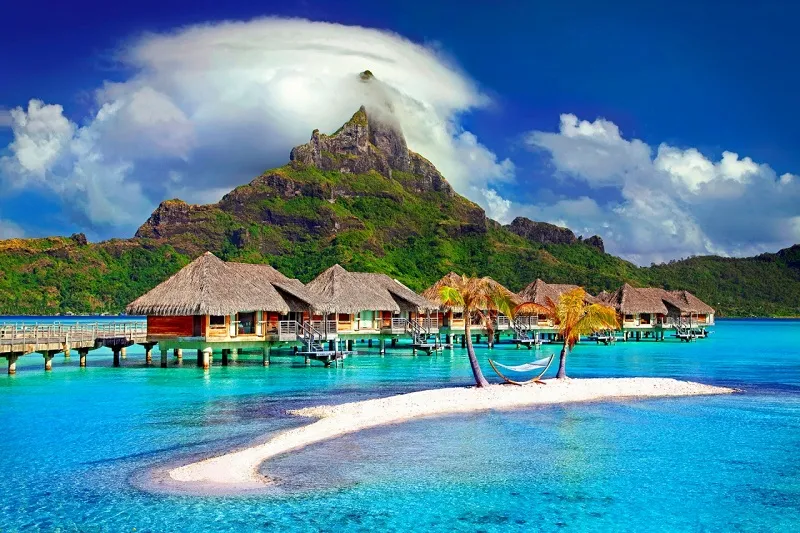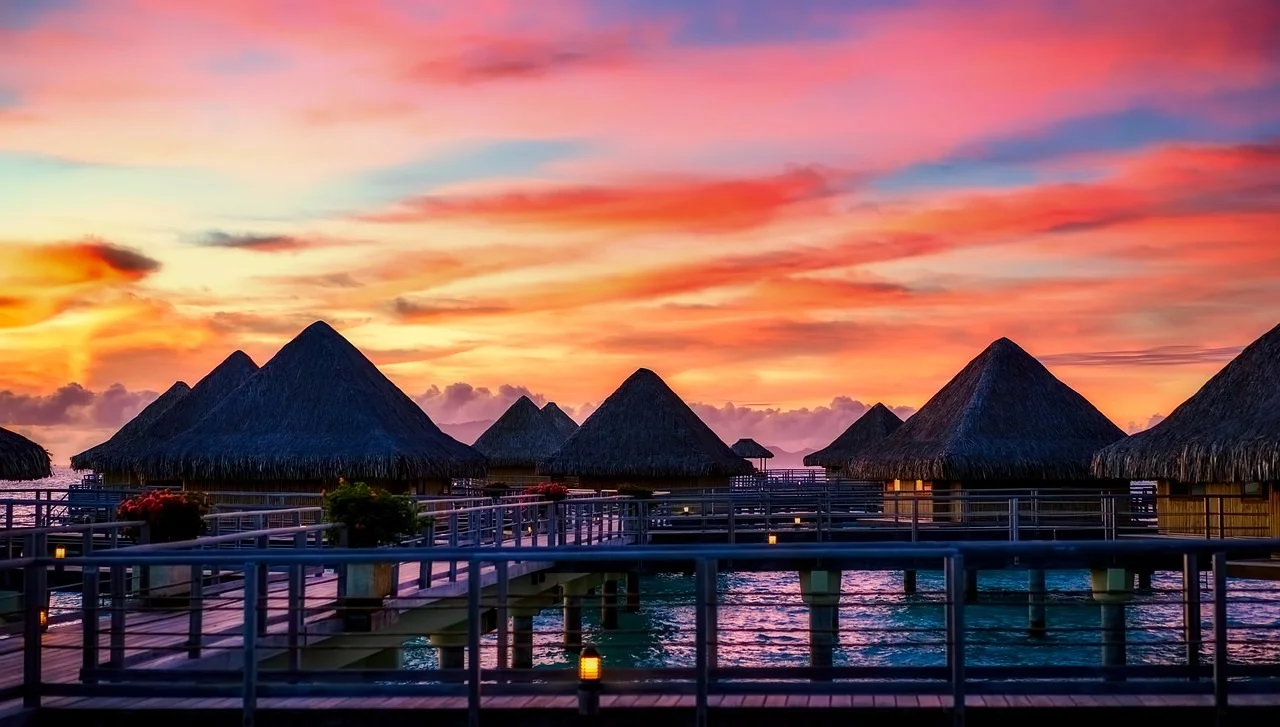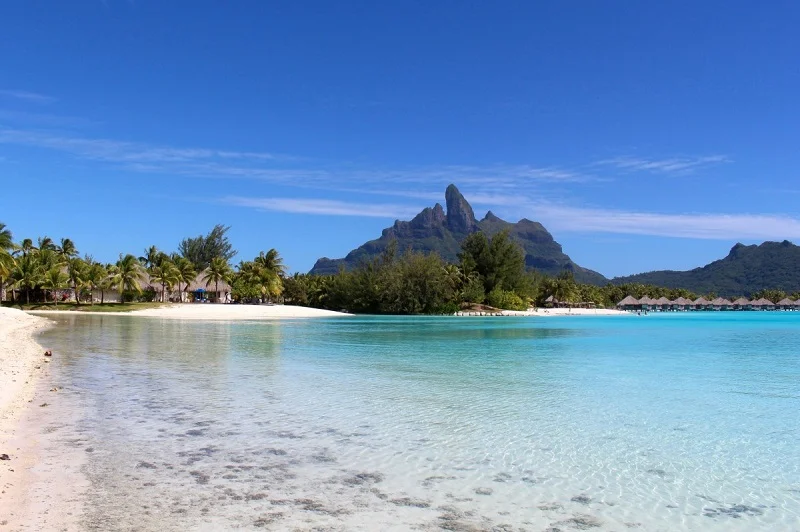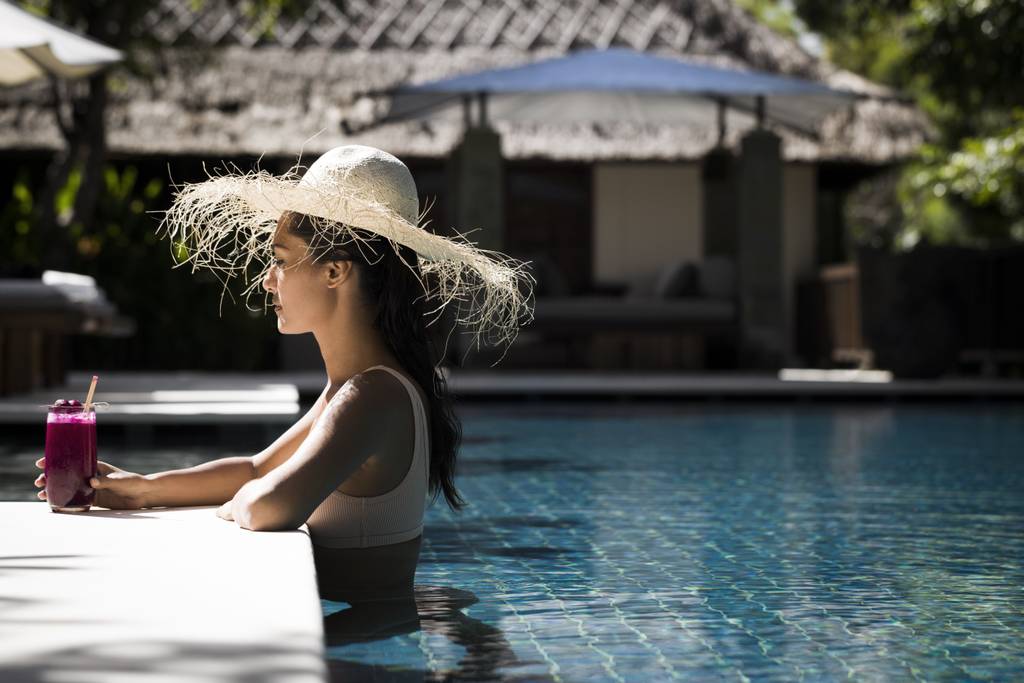
Bora Bora is the definition of a tropical paradise with its blue lagoon, white beaches, and green mountain backdrop. There is never a poor time to visit because of the year-round pleasant temperatures. This luxurious island getaway is frequently depicted with brilliant blue, sunny skies or flaming sunsets.
Any traveler who lands at Bora Bora will be enthralled by the island’s activities, which range from hiking around ancient ceremonial sites to snorkeling with rays and reef sharks. Although the island appears to be bathing in the clear sky in the photographs, keep in mind that the South Pacific has a tropical rainy season from December to March.
However, don’t let that discourage you too hastily; going during the rainy season has its benefits as well. What you need to know about the ideal times to visit Bora Bora is provided here.
Why Visit Bora Bora

The little island of Bora Bora, which is barely 6 miles long and a little over 2 miles wide, is breathtaking. At its center, a dormant volcano rises and fans out into a verdant jungle before erupting into a turquoise lagoon. In reality, Bora Bora has been referred to as “the most beautiful island in the world” by James Michener, the author of “Tales of the South Pacific.”
Even James Cook, a British adventurer from the 18th century, called it the “Pearl of the Pacific.” The epitome of a tropical escape, opulent resort-filled Bora Bora is surrounded by clear skies, warm waters, and hospitable inhabitants.
The primary industry on this tiny island in French Polynesia and its horde of tiny motu (islands), as you may have already surmised, is tourism. To that aim, you can trek Mount Otemanu, go snorkeling, and discover Vaitape, Bora Bora’s main port.
However, there is a catch: Bora Bora is incredibly pricey. In conclusion, go to Bora Bora for the natural beauty, go there to completely unwind, and go there if you can afford it.
How to Be Cost-Effective in Bora Bora

Visit in the offseason The room rate for an overwater bungalow in Bora Bora can hover close to $1,000 a night, but you can find lower rates if you visit between December and March except during the Christmas and New Year holidays.
Take a Pacific Ocean cruise many cruise lines stop at Bora Bora, so you can get a taste of the luxe life without cashing in your retirement.
Bring your alcohol and pack lots of sunscreens. Many shops on the island sell alcohol and necessities – such as sunscreen and bug spray – at high prices, so make sure to pack in surplus.
Culture & Customs
Although English is widely spoken in Bora Bora, French and Tahitian are the two predominant languages there. This is especially true of the resort staff. The people of French Polynesia move slowly.
They follow a way of life known as “Aita pea pea,” which translates to “don’t worry.” Try to adopt a more relaxed attitude and take things more slowly.
What To Eat

Travelers would be foolish if they skipped some of the local specialties, such as Poisson cru, which is raw tuna cured in lime juice and coconut milk. Seafood is a prominent ingredient on the menus of Bora Bora restaurants.
Other classics that frequently appear on Bora Bora menus include mahi mahi, grouper, and bonito. Visitors ought to try the pineapple, coconut, and bananas that are farmed nearby.
Getting Around Bora Bora
The best way to navigate Bora Bora is by bicycle, especially when you take into account that it only takes a few hours to circle the entire island. Another choice is to rent a car, but this is much more expensive than renting a bicycle. Taxis are quite pricey, and the neighborhood bus system, Le Truck, is notoriously unpredictable.
Most tourists use Motu Mute Airport, also known as Bora Bora Airport, to arrive in Bora Bora. The Faa’a International Airport in Tahiti will be your first stop if you are traveling from the United States. You will board a 45-minute flight to Bora Bora Airport after passing through customs.
Located northwest of the main island on a tiny islet called Motu Mute, this airport will take you directly to Bora Bora’s Vaitape quay after a brief catamaran ride. Before making plans, find out if your resort provides airport transportation as many do.
Best Season to Visit Bora Bora
Low Season: December to March
The greatest time to save money on resorts and avoid the crowds
The days start to become cloudier and there is a higher likelihood of rain as the dry season in Bora Bora draws to a close. The humidity increases as the temps rise a little bit. Travelers who don’t mind a little rain on their holiday may benefit from the low season for tourism in Bora Bora, which is marked by this change in the weather. Although they are infrequent, cyclones, or hurricanes, can sweep through during this time of year.
Many of the island’s top resorts reduce their costs when demand falls during the rainy season. This reduces the price of a sumptuous stay at a resort with overwater bungalows, such as the luxurious Four Seasons Bora Bora.
Another advantage of visiting Bora Bora in the off-peak season is the lack of tourists. Since most visitors come for the island’s renowned blue skies, they drastically decrease during unreliable weather.
Shoulder Season: April and November
The best of both worlds – good weather and moderate prices
The dry and wet seasons are separated by April and November, which offers some benefits for both. While there are fewer tourists and hefty resort discounts during these months, the weather still offers plenty of sunshine.
There will be some humidity and rain, but the rain showers should pass fast. The absence of strong winds during the shoulder months creates quiet, transparent waters that are ideal for scuba diving and for observing underwater creatures like sharks, manta rays, and barracudas.
High Season: May to October
The best time for blue skies and sunshine
The island of Bora Bora has its dry season throughout the wintertime, but keep in mind that this is the winter in the southern hemisphere (the opposite of the winter months in Europe, Asia, and America). Low levels of rainfall during the dry months ensure that most of your trip will be spent under clear, beautiful skies with lots of sunshine. Daytime highs in the winter hover around 28°C (83°F), which is a little colder than in the summer.
The dry season is the busiest travel period to Bora Bora due to the perfect weather for sunbathing. Remember that this typically entails higher resort rates and increased crowds all across the island. At busy times, finding seats on airplanes can be difficult as well.
January
January in Bora Bora is one of the least popular travel months due to the abundance of rain and high levels of humidity. However, now is one of the finest times of year to find a discount at a five-star resort on the island. Look around to discover what offers are available if you want to travel to Bora Bora on a budget.
February
February receives less rain than January, but it has the highest chance of cyclones. These are extremely uncommon because French Polynesia is away from the main cyclone belt, yet the possibility still exists (the last major cyclone was in 2010).
Although the high levels of humidity can be uncomfortable during the day, they also contribute to some of the most breathtaking sunsets you will ever see. Once more, this month sees a decline in tourists, which results in cheaper resort costs.
March
Although there is less rain as March progresses, there will probably still be high humidity and daily showers.
While there are still few visitors, the event season officially begins in March with contests to identify the finest
April
One of the two shoulder seasons is April. More sunshine and lower humidity are also present as the rains start to lessen. The primary scuba diving season begins in April as the water’s visibility increases.
You can still locate cheap lodging and avoid the throng because the formal busy season hasn’t yet begun.
May
The high season officially starts in May, bringing with it more sunny days but also higher resort prices. The water is perfect for scuba diving, and the big throng hasn’t yet arrived.
Teams from all over the world enter the Tahiti Pearl Regatta sailing race.
June
In June, you’ll see a dip in nighttime temperatures and a reduction in humidity, making it the ideal time to travel. Usually, perfect weather, with rainfall reduced considerably, but perhaps more importantly, humidity is lower and further alleviated by the trade winds that can last until the end of August.
Average daytime temperatures for this and the next 3 months average 28°C (82°F). But the seemingly endless dry and clear days do coincide with the start of the busier tourist season.
July
Now that trade winds have picked up, some islanders may even start lamenting the “cold weather” even though they are welcome on land but unwelcome underwater.
The year’s lowest average daytime and nighttime temperatures are continuing the warm weather, and there has been less rain overall.
August
This is perhaps the busiest month throughout the tourist season and when most Europeans like to travel. August has the finest weather, with plenty of sunshine and low humidity, although it will be crowded and expensive.
The island’s interior may be explored and beach days enjoyed because the trade winds are still blowing and making the heat more tolerable.
September
It’s still high season, but things start to quieten down a bit since it’s back to school for families coming from abroad. September marks the height of humpback whale season in Bora Bora (which runs from mid-July to the end of October).
This is the best time to see mothers and their calves in the waters surrounding the island; you can’t swim with them here as you can in Mo’orea, but there are plenty of whale-watching tours.
October
The height of the high season ends around October. Even if there is more rain and humidity toward the end of the month, there is still a lot of sunshine overall. Families visit the beaches during the local school holidays this month. In October, scuba divers return because the waters are usually calm, resulting in excellent visibility.
Average daily temperatures begin to increase by one degree (°C), and more obviously, humidity levels climb. As the rainy season approaches, rainfall starts to rise; in October, there is roughly 30% more rain than in September, but less than half as much as in October following.
November
One of the two shoulder season months is November. Although there are more rain showers and more humidity, overall the temperatures are still tolerable, and there is still some sunshine. You’ll notice a decline in resort prices as well as a tendency for crowds to dissipate.
Additionally, visibility is still excellent for scuba diving and snorkeling because the severe rains haven’t yet started.
December
The month of December is the wettest in Bora Bora. It has a rainfall of 280mm (11 inches) is about 5 times greater than in August. Despite this, the number of visitors drastically rises between Christmas and New Year.
Along with extended spells of gloomy skies; it can also be rather rainy. Christmastime, on the other hand, is a time for fervent celebrations all around the island. Tourists are welcome at many local events, and the locals truly get into the holiday spirit.
